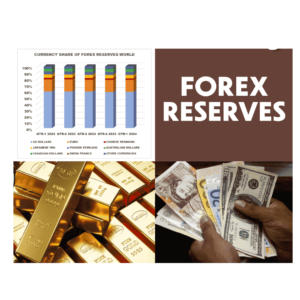
Index Funds
Introduction
Picture this: You’re looking to invest your hard-earned money in the stock market, but the overwhelming complexity and the fear of making the wrong choices give you pause. You’re not alone in this dilemma. In today’s fast-paced financial world, investing can seem like an intimidating journey into the unknown.
What if, however, there was a method to streamline the procedure, lower the risks, and maybe generate healthy returns without having to constantly monitor your investments or shell out a lot of money to financial advisors? Index investment can be useful in this situation.
Index investing, often referred to as passive investing, has gained tremendous popularity in recent years. It offers an enticing proposition for both novice and experienced investors: a straightforward and cost-effective way to participate in the stock market’s growth. It’s like having an experienced professional by your side as you make your way through the confusing maze of the financial markets.
What are Index Funds?
Imagine you’re at a buffet with a wide variety of dishes. Instead of picking individual items from the menu, you decide to try a little bit of everything because you believe that, on average, it will be delicious. That’s essentially what an index fund does in the world of investing.
An index fund is like a buffet for your money. It’s a type of investment fund that pools together money from many people to buy a wide range of stocks or bonds. What makes these funds unique is that they aim to mimic the performance of a specific stock market index, like the S&P 500 and NIFTY50.
Now, you might be wondering, What’s a stock market index? Think of it as a scoreboard for the stock market. It’s a list of the top-performing companies in a particular category, like technology or healthcare. The S&P 500, for instance, includes 500 of the largest and most influential companies in the United States.
So, when you invest in an index fund, you’re essentially buying a small piece of all the companies listed in that index. It’s like getting a taste of the entire buffet without having to select each dish individually.
This approach has some fantastic advantages. Index funds are known for their simplicity and low costs because they don’t require a team of fancy stock pickers or frequent buying and selling of assets. They just follow the index; no guesswork is involved.
Plus, they provide instant diversification, which is like spreading your buffet choices to reduce the risk of getting a bad dish. Even if one company in the index has a tough time, it won’t spoil the whole meal because you’ve got a bit of everything on your plate.
How Do Index Funds Work?
Consider investing in index funds as a “set it and forget it” strategy. It’s like having a professional chef prepare a diverse and balanced meal for you without you needing to know all the recipes and ingredients.
Here’s how it works:
- Selection of Stocks or Bonds: Imagine you want to invest in the stock market, but you don’t have the time or expertise to choose individual stocks. An index fund does this for you. It’s like a shopping list of stocks or bonds that follow a specific index, such as the S&P 500 or the Nasdaq.
- Pooling Money: Many people like you who want to invest, pool their money together into the index fund. This creates a big pot of money to work with.
- Mirror the Index: The index fund manager’s job is to mimic the performance of the chosen index. They do this by buying the same stocks or bonds in the same proportions as they appear in the index. It’s like recreating a recipe from a cookbook step by step.
- Passive Management: Here’s the beauty of it: index funds are passive investments. This means they don’t involve a lot of active decision-making. There’s no need for a team of experts to analyze and pick stocks. They simply follow the index’s lead.
- Diversification: Since the index typically includes a variety of companies from different industries, your investment is automatically diversified. It’s like having a plate with a bit of everything from the buffet, so you’re not overly reliant on one dish.
- Low Costs: Because index funds don’t require fancy strategies or constant buying and selling, they come with lower fees compared to some other types of investments. It’s like getting a gourmet meal without the gourmet price tag.
- Long-Term Growth: Index funds are often seen as long-term investments. You’re not trying to outsmart the market; you’re letting the market’s overall growth benefit you over time. It’s comparable to planting a tree and seeing it grow steadily.
- Accessibility: Index funds are accessible to both new and experienced investors. You can start with a relatively small amount of money and add to your investment over time.
- Market Performance: As the companies in the index perform well, your investment grows. If they don’t do so well, your investment may not grow as quickly, but it won’t plummet either because of its diversified nature.
In essence, index funds make investing easier for those who want a solid, low-maintenance approach. It’s like having a personal chef for your money, ensuring that your investments are well-balanced and designed for long-term success without you needing to become a stock market expert.
Advantages of Index Funds
- Simplicity: Imagine investing without the stress of picking individual stocks. Index funds make it simple. You’re essentially buying a piece of the entire stock market or a specific section of it, like tech companies or healthcare. No need for a crystal ball.
- Diversification: It’s like having a well-balanced buffet on your plate. Index funds hold a mix of many stocks or bonds. If one doesn’t perform well, it’s okay because you’ve got plenty of other options. This spreads risk and reduces the impact of one bad apple.
- Low Costs: Ever compare the prices of a fancy restaurant with a good old diner? Index funds are more like diners. They don’t require expensive stock pickers or frequent trading. This means lower fees for you, which can add up to more money in your pocket over time.
- Consistency: Index funds aim to match the performance of a specific index, like the S&P 500. This means you’re not trying to beat the market; you’re going along for the ride. It’s like sailing smoothly with the wind instead of rowing against it.
- Transparency: You know what’s on your plate. Index funds regularly disclose their holdings, so you’re not in the dark. You can see which companies or bonds you’re invested in. No mysteries here.
- Accessibility: Index funds are like a friendly neighborhood café. You don’t need a mountain of cash to start. You can dip your toes in the investing waters with a modest amount and add more as you go.
- Steady Growth: Picture a slow and steady river rather than a turbulent wave. Index funds are built for long-term growth. They might not make you rich overnight, but they’re designed to steadily increase your investment over time.
- Market Benchmark: Index funds provide a measuring stick for the entire market. If your index fund is doing well, it’s like your favorite sports team leading the league. It’s a good sign that the overall market is healthy.
- Minimal Turnover: Unlike some funds that buy and sell stocks constantly, index funds keep things simple. They only make changes when the index itself changes. This reduces costs and potential taxes, leaving more money for you.
Downsides and Risks of Index Investing
Limited Control: When you invest in an index fund, you’re essentially hitching your wagon to the entire index. You can’t pick and choose individual stocks. So, if there’s a specific company you believe in, you won’t have the power to invest in it directly.
No Outperformance Guarantee: Index funds aim to match the performance of their chosen index, not beat it. While this is good for steady, consistent growth, it means you won’t enjoy the thrill of outperforming the market. If the index does poorly, your investment follows suit.
Market Downturns: Index funds aren’t immune to market downturns. When the overall market takes a hit, so do index funds. It’s like being on a rollercoaster; you’ll experience the ups and downs, which can be nerve-wracking if you’re not prepared.
Lack of Flexibility: If you believe a particular sector or industry is about to boom, you can’t quickly shift your investments within an index fund to capitalize on it. You’re locked into the index’s composition.
Dependency on the Index: Your success hinges on the performance of the underlying index. If that index consists of underperforming companies, your returns will reflect that. It’s like having your fate tied to the fortunes of the companies in the index.
Fees and Expenses: While index funds are generally low-cost, they’re not entirely fee-free. Management fees and other expenses can eat into your returns over time, especially if you’re investing a significant amount.
Tracking Error: Index funds aim to mimic the index, but they may not perfectly match its performance. This slight difference is called a tracking error. While it’s usually small, it can add up over time and affect your returns.
Overvaluation Risk: Index funds buy shares of companies in proportion to their market capitalization. This means if a company becomes overvalued and its stock price skyrockets, the index fund buys more of it, potentially exposing you to a bubble.
No Active Management: While this is an advantage in some ways, it can also be a downside. Active fund managers can react to changing market conditions, which index funds can’t. If the market suddenly shifts, you’ll need to ride it out.
Index Investing VS Active Investing
Index Investing
Imagine index investing as taking the backseat in a car that’s on autopilot.
1. Strategy: Index investing is like saying, “I’ll go wherever the road takes me.” It aims to mimic the performance of a specific market index, like the S&P 500. You’re not trying to outsmart the market; you’re riding along with it.
2. Management: It’s like having a GPS guiding your way. Index funds follow a predetermined set of rules to buy and hold a mix of stocks or bonds that make up an index. There’s no need for a human driver to make decisions.
3. Diversification: You’re basically driving a minivan with all your friends. Index funds spread your money across many companies or bonds in the index. If one friend has a bad day, it doesn’t ruin the whole trip.
4. Costs: It’s like choosing a low-cost airline ticket. Index funds have minimal management fees because they don’t require expert stock pickers. In the long run, this can help you save money.
5. Activity: Think of it as a calm, scenic drive. Index funds don’t buy and sell stocks often. They stay the course, only making changes when the index itself changes.
Active Investing
Now, picture active investing as taking the steering wheel:
1. Strategy: Active investors are like saying, “I can find shortcuts and detours to beat traffic.” They aim to outperform the market by making strategic decisions, like buying and selling stocks based on research, trends, or hunches.
2. Management: It’s like having a skilled driver who knows all the back roads. Active funds rely on expert portfolio managers or traders who actively make decisions to buy and sell assets.
3. Diversification: Active investors might choose a single sports car they believe will win the race. They often have a more concentrated portfolio, which can lead to higher risk if that one car stumbles.
4. Costs: Active management is akin to hiring a private chauffeur; it can be expensive. The fees for actively managed funds are usually higher due to the expertise involved.
5. Activity: Think of it as a race where you might need to switch lanes frequently. Active funds buy and sell assets regularly, trying to capitalize on market movements.
In a nutshell, index investing is like a smooth, low-cost, and hands-off journey, while active investing is a more involved, potentially costly, and strategy-driven adventure. Each has its pros and cons, and the right choice depends on your goals, risk tolerance, and how much control you want over your investment journey.
How to Get Started with Index Investing?
Step 1: Understand What Indexes Are
Think of an index as a shopping list. It’s a collection of specific items (in this case, stocks or bonds) that represent a particular market or segment of the economy. For example, the S&P 500 index lists 500 of the largest publicly traded companies in the U.S.
Step 2: Choose Your Index
Decide which index you want to invest in. Each index reflects a different part of the market. For example:
S&P 500: Represents large U.S. companies.
Dow Jones Industrial Average: Lists 30 big-name U.S. companies
NASDAQ-100: Focuses on tech companies.
NIFTY50: is an Indian stock market benchmark index that measures the weighted average of 50 of the biggest Indian firms listed on the National Stock Exchange
Your risk tolerance and investment objectives will influence your decision.
Step 3: Pick an Index Fund or ETF
Imagine index funds and exchange-traded funds (ETFs) as baskets that hold all the items on your shopping list (the stocks in the index). You can buy these baskets instead of each item individually.
Example: If you want to invest in the S&P 500, you can choose an S&P 500 index fund or ETF. These funds automatically buy all 500 stocks in the index for you.
Step 4: Open an Investment Account
Just like you need a wallet to carry your money, you’ll need an investment account to hold your index funds, or ETFs. You can open an account with a brokerage firm, a robo-advisor, or even through your bank.
Step 5: Invest Regularly
Start putting your money into your chosen index fund or ETF regularly. You can set up automatic transfers from your bank account, much like automatic savings.
Example: Let’s say you decide to invest $100 every month in an S&P 500 index fund. Over time, you’ll buy shares of all the companies in that index.
Step 6: Monitor your investments
Check in on your investments periodically, but don’t obsess over daily changes. Remember, index investing is like a long road trip; there may be some bumps, but you’re in it for the long haul.
Step 7: Rebalance as Needed
Every so often, review your portfolio. If your goals or risk tolerance change, you can adjust your investments accordingly. This is like fine-tuning your GPS on a long journey.
Step 8: Stay Informed
Keep learning about index investing and financial markets. Understanding your investments better is like having a better map for your journey.
Step 9: Be Patient
Index investing is a long-term strategy. It takes time to grow, just like when you plant a tree. Don’t be discouraged by short-term market ups and downs.
Example: Imagine you started investing in an index fund that tracks the S&P 500 in 2008, right before the financial crisis. If you held onto your investment, by 2021, you’d likely have more than doubled your money.
Remember, getting started with index investing doesn’t require you to be a financial expert. It’s like following a recipe; you just need to know the ingredients and the basic steps. Your investments may gain value over time and aid in the accomplishment of your financial objectives.
Index Investing Strategies
Broad Market Indexing
Imagine you want a piece of the entire stock market, not just one segment. You’d invest in a broad market index.
Example: The S&P 500 is a classic example. It includes 500 of the biggest U.S. companies, like Apple, Amazon, and Microsoft. Investing in an S&P 500 index fund gives you a slice of all these companies.
Sector-Specific Indexing
Think of this as being picky at a buffet. You choose a specific section, like tech stocks or healthcare, to invest in.
Example: The Technology Select Sector SPDR Fund (XLK) focuses solely on tech companies like Apple and Microsoft. If you believe in the tech sector’s growth, you’d invest in XLK.
International Indexing
If you want a taste of international markets, this strategy is like ordering dishes from different countries.
Example: The MSCI EAFE Index represents developed markets in Europe, Asia, and Australia. Investing in an ETF that tracks this index gives you exposure to companies in these regions.
Dividend Investing
Picture investing in companies that pay you a portion of their profits, just like receiving dividends from owning stock.
Example: The Dividend Aristocrats Index includes companies that have a history of consistently raising dividends. Investing in an ETF tracking this index means you get regular dividend payments.
Small-Cap and Value Investing
Small-cap stocks are like tiny restaurants with potential. Value stocks are those considered undervalued.
Example: The Russell 2000 Index tracks small-cap stocks, while the Russell 1000 Value Index focuses on undervalued large-cap stocks. You can invest in ETFs that follow these indices for a mix of small-cap and value stocks.
Fixed-Income Indexing
It’s like having a side dish of bonds alongside your stocks for stability.
Example: The Bloomberg Barclays U.S. Aggregate Bond Index includes various types of bonds. By investing in an ETF tracking this index, you’re adding bonds to your portfolio.
Factor-Based Investing
This is like choosing ingredients based on specific traits you like, such as low volatility or high dividends.
Example: The iShares Edge MSCI Minimum Volatility ETF (USMV) selects stocks that historically have lower price swings. If you prefer less risk, you might invest in USMV.
ESG Investing
ESG stands for environmental, social, and governance. It’s like choosing restaurants that follow ethical practices.
Example: The MSCI World ESG Leaders Index includes companies with strong ESG ratings. If you want your investments to align with your values, you might opt for an ETF that tracks this index.
Common Myths and Misconceptions
Here are some common myths and misconceptions about index investing:
Myth1: Index Investing Is Risk-Free
Fact: While index funds are less risky than individual stock-picking, they can still fluctuate with the market. No investment is entirely risk-free.
Myth 2: Index Funds Are Only for Novice Investors
Fact: Many seasoned investors use index funds as core holdings because of their diversification benefits and low costs.
Myth 3: Active Management Always Beats Index Investing
Fact: Research shows that over the long term, most active managers fail to beat their benchmarks consistently. Indexing often outperforms due to lower fees.
Myth 4: Index Funds Are All the Same
Fact: While they aim to replicate the same index, differences in fees, tracking errors, and fund management can lead to variations in performance.
Myth 5: Index Funds Are Limited to Stocks
Fact: Index funds cover a wide range of assets, including bonds, commodities, and real estate.
Myth 6: Index Investing Means No Control
Fact: You still have control over your asset allocation and can adjust your portfolio to align with your goals.
Myth 7: All Index Funds Have Low Fees
Fact: While index funds tend to have lower fees than actively managed funds, fees can vary among different providers and fund types.
Myth 8: Index Investing Guarantees High Returns
Fact: Index funds offer returns in line with the market they track. Market performance can vary, and there are no guarantees.
Myth 9: Index Investing Is Only for Long-Term Investors
Fact: Index funds can be suitable for both long-term investors and those looking for shorter-term strategies.
Understanding these myths and realities can help you make informed decisions about index investing and align your expectations with the actual benefits and risks involved.
Final Takeaway
Index investing is like the unsung hero of the investment world, quietly and consistently delivering results for those who embrace it. Whether you’re a seasoned investor or just starting your financial journey, index funds can be your reliable companions.
Remember, it’s not about chasing the latest hot stock or trying to time the market perfectly. Instead, it’s about the long game, the steady growth, and the peace of mind that comes with a diversified, low-cost strategy.
So, as you step into the world of investing, consider the power of index funds. They’re a simple, effective way to participate in the growth of the global economy. With the right approach and a bit of patience, you can watch your wealth grow over time, inch by inch, until it’s reached heights you never thought possible.
Even if there are some myths and misunderstandings about index investing, being knowledgeable can help you make wise choices for your financial future. Index investing can be useful in your financial toolbox, whether you’re a novice investor looking to begin your journey or a seasoned investor searching for a solid approach.
Ultimately, index investing is about setting yourself up for financial success with a strategy that’s proven, dependable, and designed to work for you, not against you. So, take the plunge, start small if you must, and watch your money work harder for you than ever before. Your financial future is waiting, and index investing can help you reach it.







